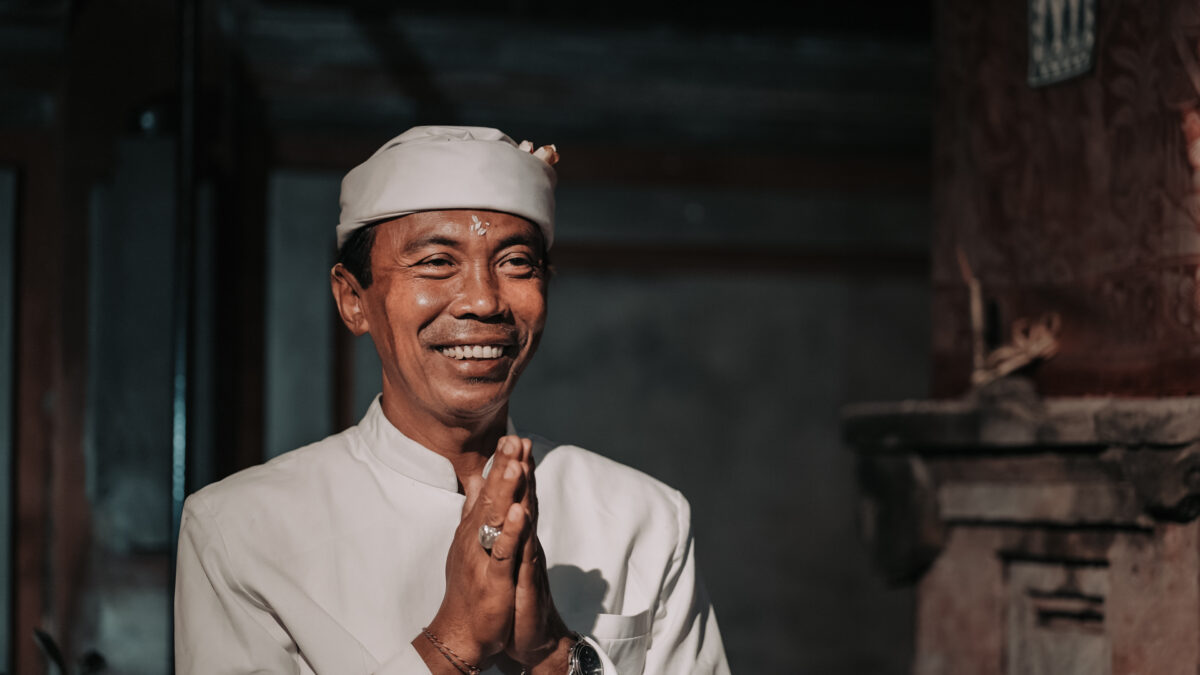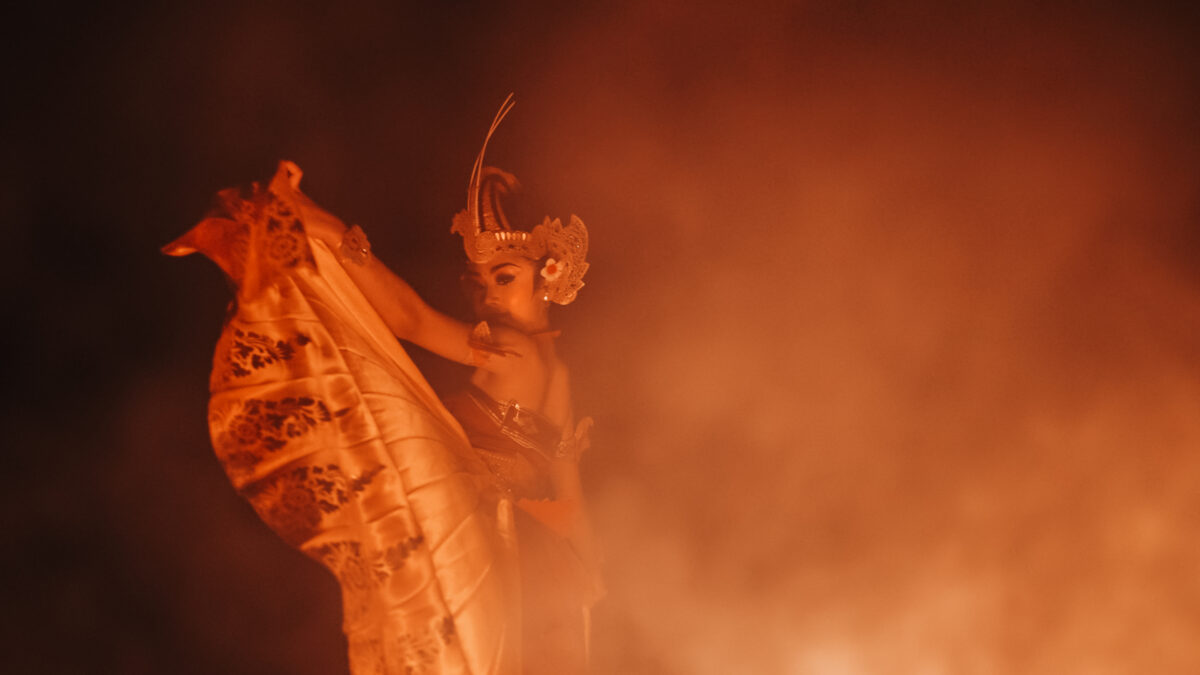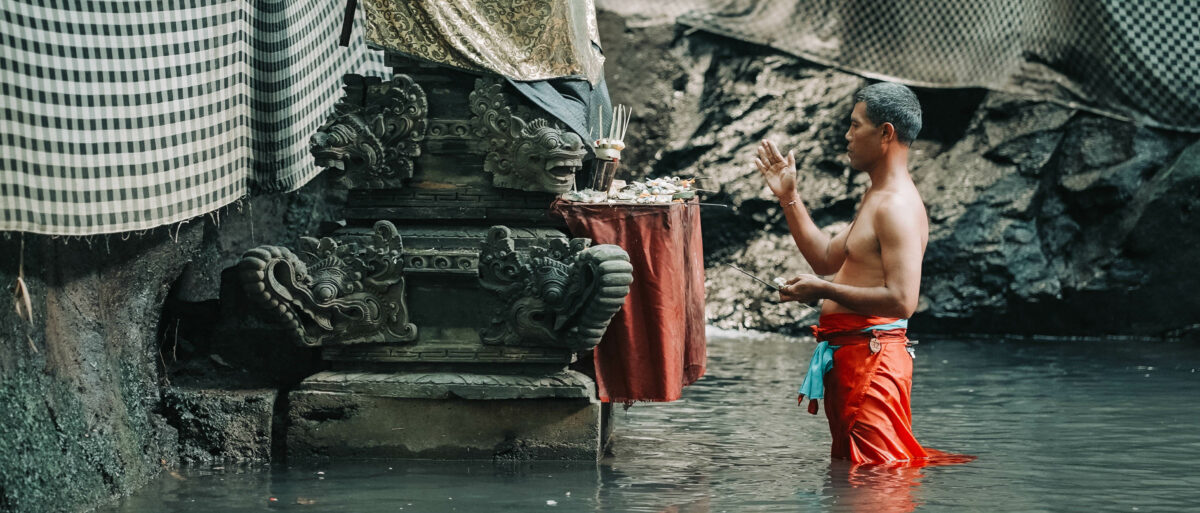Deep in the lowland tropical forests of Indonesian Borneo, a single voice emerges from a cave. The singer, a young man named Marut, sings of his lost invincibility, and laments that he no longer has the strength to travel, but still wishes to journey to distant places. “I hope that will be my destiny,” he pleads. “I ask for my journey to be successful.”
Marut is a member of the Cave Punan, a group of hunter-gatherers on the island whose territory is being encroached upon by forest clearing for lucrative palm oil farms. Until recently, few even knew of the group’s existence. That changed in 2018 when renowned anthropologist Professor Stephen Lansing heard rumors of a nomadic group of people still living the hunter-gatherer lifestyle in the region. Since establishing contact with the outside world, the Cave Punan have invited Lansing and others to document their culture and traditions to better spread the word about their plight.
“It’s looking like a disaster, and they’re asking for help,” Lansing explained to nft now. “They sang their desire for help in their mother cave.”
Thanks to Web3, the Cave Punan (along with other ancestral cultural groups in Indonesia) could soon be getting that help.
Using NFTs to protect cultural heritage
Lansing is the anthropological advisor and curator for Quantum Temple, a new NFT marketplace that aims to connect collectors with worldwide communities, spreading culture in a new way to immortalize cultural artifacts, traditions, and practices on the blockchain. Using the technology, communities like the Cave Punan generate stable income by minting their cultural heritage as NFTs, and also establish a direct line to the outside world — calling attention to communities in need, and thereby fostering survival.
The concept is one of the more noble applications of Web3 tech. Communities, like the Cave Punan, that choose to participate in Quantum Temple’s ecosystem will have the chance to co-create NFT collections that document the intangible and tangible artifacts that make up their culture, which Web3 community members can then acquire. The result, the company hopes, will be more robust revenue streams for those communities and a more dignified and equitable cultural exchange than the current tourism industry can provide.
“The cultural tourism sector has fundamental, structural challenges to it, like value misalignment and value extraction from the communities people come to visit,” explained Linda Adami, founder and CEO of Quantum Temple, while speaking with nft now.
“The livelihoods of the communities that are part of these sectors were completely compromised.”
Linda adami
That value misalignment is well-documented. The United Nations World Tourism Organization estimates that for every 100 dollars spent by tourists in a developed country, only roughly five dollars stay in a developing country’s economy. Big multinational companies that run much of the tourism infrastructure in places like Bali extract the money flowing into the region nearly as quickly as it arrives.
“During the COVID-19 pandemic, this fragility was pronounced, and there was essentially no [sector] resilience,” emphasized Adami, who spent much of the pandemic living in Bali and witnessing how groups relied on tourism struggled to make ends meet as a result. “The livelihoods of the communities that are part of these sectors were completely compromised. Many had to default back to farming to provide for themselves.”
Bali as a Web3 testing ground
The platform’s genesis drop, which is scheduled to release in late 2022, will include ethnographic videos of rituals, chants, and music from the Balinese communities that make up the UNESCO World Heritage site that Lansing helped the Indonesian government secure in 2012.
Future NFT drops will include physical collectible NFTs featuring hand-made items from communities deep in the Indonesian interior like traditional genta, sacred bells made by craftspeople of the Balinese Pande clan. Pairing NFTs with a physical artifact could help restore these communities’ handcraft traditions. Since such groups are typically isolated, tourists are reluctant to carry large sums of cash while venturing to visit them. But this has forced the groups to reduce the quality of their craft to ensure they can actually make a sale.

“What Quantum Temple can do is take the rituals, performances, and artifacts among the villages in that World Heritage Site and make them accessible to visitors,” explained Lansing. “Many of these communities are deep in the interior around Jatiluwih, where they’re difficult to reach. Secondly, [the platform] is a way for these communities to acquire recognition of their intellectual property. What really hooked me was that the plan is to create several streams of benefits both for the creators of the cultural artifacts in these communities and the communities themselves.”
Other planned drops include cultural experience NFTs, wherein the communities collaborating with Quantum Temple help organize tour groups to come and experience rituals and environments of the group’s choosing. These rituals include the melukat water purification ceremony and rites at the Pura Tirta Empul water temple.
Cultural enthusiasts can sign-up for Quantum Temple’s two-tiered membership waitlist, which consists of a silver or gold Cosmic Egg Membership NFT. This NFT grants the holder access to the platform’s marketplace. Half of the Cosmic Egg Membership value will go to the company’s Impact Fund to benefit communities, and members will also earn governance votes for decisions made in that fund. Other benefits include access to official Quantum Temple in-person events, token-gated community and content, and priority access to future NFT drops, airdrops, and rewards.
“Quantum Temple gives them their own voice.”
Dr. Stephen Lansing
Quantum Temple shares the same amount of revenue from its NFTs with local communities across primary and secondary sales. This means the company and those communities will earn 40 percent of primary sales for Cultural Heritage NFTs (the intangible artifacts of culture) and 45 percent for Cultural Artifact and Experience NFTs. The remaining 20 and 10 percent will be distributed among the technical staff who film and document the NFTs, and curators like Lansing, with the rest going into the platform’s Impact Fund for future use by the Quantum Temple community. For secondary sales, the company implements a progressive royalty policy that starts at 10 percent and decreases to 2.5 percent as the value of the NFTs accrues.

Notably, the team will put potential community members through a screening process to ensure their intentions align with the cultural mission of the company.
“We are very intentional about our community building,” Adami elaborated. “We want to make sure that the members that are part of it are there for the long term and are aligned with the vision and mission of the organization: culture heritage, cultural anthropology, sustainable regenerative travel and tourism, regenerative financing, social impact investing, and so on.”
Onboarding ancient cultures to Web3
Onboarding cultural groups to the Quantum Temple platform is a mix of top-down and bottom-down engagement. The team complies with the principles of UNESCO FPIC (free, prior, and informed consent) to bring them into the fold.
“We start with the institutions and a strong focus on government ministries of culture and tourism, tourism boards, and the local institutions that are involved in the regions in which we’re working. We’re very clear about what the opportunities are and how Quantum Temple is in compliance with the local rules and regulations. After that, we define the local stakeholders and begin engaging with the communities. Then, we start involving them in the co-creation process of the NFT collections.”

Communities then have creative control over what gets put on the blockchain. Highlighting the empowering nature of this model, Lansing underscored that this is the reverse of what media companies looking to capture photo and video evidence of these communities’ practices often resemble.
“I’ve had many film crews come visit me in Bali,” Lansing recalled. “But they don’t work with the communities to plan what they film. Instead, they find whatever they want, they shoot it, and leave. And the community has almost no say in what gets filmed. Nor is there a way for them to benefit.”
Using NFTs for cultural lobbying
One potential future application of chronicling culture through blockchain technology is that it could be used to give voice to communities trying to get the attention of global bodies like UNESCO for heritage designations of other benefits. In Bali, for example, a non-governmental organization known as ICOMOS makes all decisions regarding competitions for World Heritage designation. A large part of that decision-making process relies on reports from consultants, and the people who live in the communities whose heritage status is at stake have very little say in the process overall.
“[These NFTs] give people the rights to their own intellectual property, both on the level of individual creators and also on the level of communities.”
Professor Stephen Lansing
“Quantum Temple gives them their own voice,” underlined Lansing.
The Web3 ethos of giving artists and communities a direct line to their audience without having to deal with intermediaries could greatly affect how these cultures represent themselves to the world. What has worked for artists in the Web3 space on an individual level could work on a community-wide scale when applied through an anthropological lens.
“[These NFTs] give people the rights to their own intellectual property, both on the level of individual creators and also on the level of communities,” continued Lansing. “I believe that within a matter of years, when a country wishes to apply for the recognition of the intangible, outstanding universal value of something, they’ll probably do it with this system like Quantum Temple, rather than by just reports by experts who were called in and paid to write reports.”

As travelers and organizations reconsider their role and responsibility in a post-lockdown travel industry, organizations like Quantum Temple could fill the gap between people’s desire to travel and their desire to do so responsibly. They could help facilitate deeper connections between cultural groups and travelers that don’t end up being a net negative to the communities that host them.
“When we travel we often have surface-level experiences,” noted Adami. “The rise of conscious travel comes with the responsibility of deeper understanding and more meaningful connections with host communities, their lands, and their heritage. What Quantum Temple aims to do is amplify the voices, stories, and traditions of ancestral communities and unlock regenerative funding through blockchain applications. And NFTs are the perfect vehicle to enable that.”
NFTs are often conflated with art, but the potential use cases for the technology stretch far beyond that. From raising money for scientific research to owning a piece of NASA’s history or changing the way professional skateboarders make a living, NFTs are an astoundingly diverse tool. Despite the scams and the spectacular crypto crashes, the tech can be leveraged for good causes. Rectifying the exploitative relationship that the travel industry has with the cultural actors it depends on is one such cause that we should embrace with open arms.
Read More: nftnow.com









 Bitcoin
Bitcoin  Ethereum
Ethereum  Tether
Tether  XRP
XRP  Solana
Solana  USDC
USDC  Dogecoin
Dogecoin  Cardano
Cardano  TRON
TRON  Lido Staked Ether
Lido Staked Ether  Wrapped Bitcoin
Wrapped Bitcoin  Sui
Sui  Chainlink
Chainlink  Wrapped stETH
Wrapped stETH  Avalanche
Avalanche  Stellar
Stellar  Shiba Inu
Shiba Inu  Hedera
Hedera  Hyperliquid
Hyperliquid  Toncoin
Toncoin  Bitcoin Cash
Bitcoin Cash  LEO Token
LEO Token  Pi Network
Pi Network  Polkadot
Polkadot  Litecoin
Litecoin  USDS
USDS  WETH
WETH  Monero
Monero  Wrapped eETH
Wrapped eETH  Pepe
Pepe  Bitget Token
Bitget Token  Binance Bridged USDT (BNB Smart Chain)
Binance Bridged USDT (BNB Smart Chain)  Ethena USDe
Ethena USDe  Coinbase Wrapped BTC
Coinbase Wrapped BTC  WhiteBIT Coin
WhiteBIT Coin  Uniswap
Uniswap  Bittensor
Bittensor  NEAR Protocol
NEAR Protocol  Aptos
Aptos  Dai
Dai  Aave
Aave  OKB
OKB  Ondo
Ondo  Ethereum Classic
Ethereum Classic  Internet Computer
Internet Computer  Cronos
Cronos  BlackRock USD Institutional Digital Liquidity Fund
BlackRock USD Institutional Digital Liquidity Fund  Tokenize Xchange
Tokenize Xchange